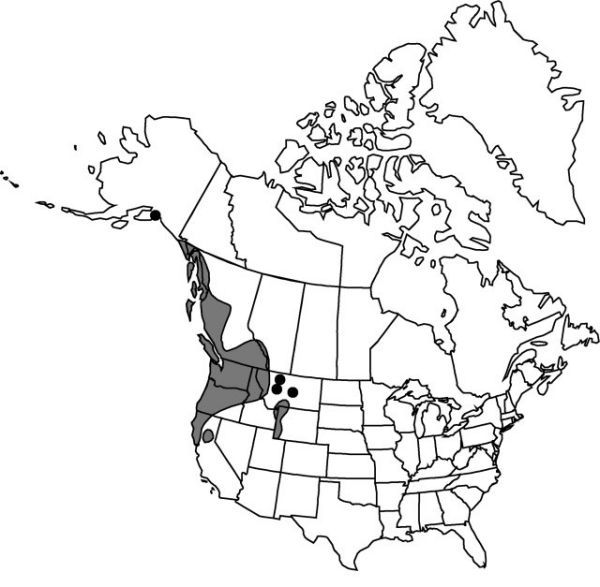Corallorhiza mertensiana
Mém. Acad. Imp. Sci. St. Pétersbourg, Sér. 6, Sci. Math. 2: 165. 1832.
Stems ± strongly thickened, base not bulbous. Inflorescences: racemes dense, 35–65 × 1.5–4 cm. Flowers 8–35, showy; perianth open; sepals reddish purple, sometimes yellowish near base, or completely yellow, lanceolate, 3-veined, 6–12 mm; dorsal sepal arching over column, nearly adhering to it; lateral sepals strongly spreading; petals arching over column, connivent with dorsal sepal, often yellowish basally, and streaked with purple, or completely yellow suffused with purple toward apex; lip red-purple, white, or white with purple streaks or spots, narrowly obovate, 4.8–9.5 × 2.5–5 mm, thin, usually with small (0.7 mm) tooth on each side, margins undulate-denticulate; column curved somewhat toward lip, yellow, often flushed with purple or white basally, and streaked or spotted with purple, 5–8.2 mm; ovary 5.9–10 mm; mentum prominent, protruding backward along ovary but free from it. Capsules ellipsoid, 10–25 × 6–9 mm. 2n = 40.
Phenology: Flowering late spring–summer.
Habitat: Moist to dry coniferous and mixed woods
Elevation: 0–2300 m
Distribution

Alta., B.C., Alaska, Calif., Idaho, Mont., Oreg., Wash., Wyo.
Discussion
In the Pacific Northwest Corallorhiza mertensiana is largely sympatric with C. maculata and occasionally intergrades with it. It frequently forms large clumps.
Selected References
None.